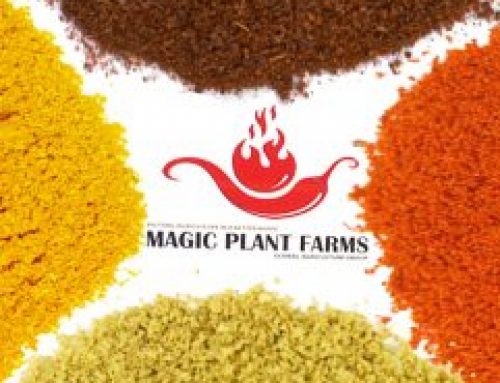Magic Plant Farms remains instrumental in supporting the world’s captivation of everything spicy by consistently providing the largest selection and highest quality of chili pepper and capsicum products for all your needs. From traditional to non-traditional global ethnic cuisines, for the growing excitement of spicy cocktails and inferno hot snacks to spicy desserts, jams, and jellies.
As the popularity of spicy foods continues to grow, there are several upcoming trends in the use of chili peppers that we can expect to see in the near future.
Ethnic flavor blends: Consumers are becoming more interested in exploring global cuisine, and we can expect to see more ethnic flavor blends that incorporate chili peppers in new and creative ways. For example…
… We might see a fusion of Mexican and Korean flavors, …
Korean cuisine: Korean cuisine makes use of chili peppers in a variety of ways, from spicy soups and stews to marinades and sauces. The gochugaru chili flakes and gochujang chili paste are essential ingredients in many Korean dishes.
Mexican cuisine: Chili peppers are an essential ingredient in many Mexican dishes, such as tacos, enchiladas, and salsa. Popular varieties of chili peppers used in Mexican cuisine include jalapeno, serrano, poblano, and habanero.
… or Indian and Thai flavors …
Indian cuisine: Chili peppers are commonly used in Indian cuisine, particularly in dishes from the southern and western regions of the country. Popular chili peppers used in Indian cuisine include the spicy and smoky Kashmiri chili, the fiery bhut jolokia, and the milder but flavorful cayenne pepper.
Thai cuisine: Thai cuisine is known for its spicy and flavorful dishes, with chili peppers being a key ingredient in many of them. Thai curries, stir-fries, and soups often include chili peppers, with the bird’s eye chili being a particularly popular variety.
Even with these new flavor blends, traditional cuisines are still growing in demand. Magic Plant Farms consistently meets the growing demand of global cuisines by supplying key chili pepper ingredients year-round. Some examples include:
Jamaican cuisine: Jamaican cuisine is known for its spicy jerk seasoning, which includes chili peppers such as the scotch bonnet. Jerk chicken and pork are popular Jamaican dishes that make use of this spicy seasoning.
Peruvian cuisine: Aji Amarillo: This bright yellow chili pepper is a staple and has a distinct fruity flavor with a moderate level of heat. It is often used in ceviche and other seafood dishes, as well as in sauces and marinades.
Syrian cuisine: Aleppo pepper: This Syrian pepper has a moderate level of heat and a fruity, slightly sweet flavor. It is often used in Middle Eastern and Mediterranean cuisine and is a popular seasoning for grilled meats and vegetables.
Chinese cuisine: Sichuan Pepper: While not a chili pepper in the traditional sense, Sichuan pepper is often used in Chinese cuisine to add a numbing, tingling sensation to dishes. It has a citrusy and slightly floral flavor and is often used in Sichuan cuisine.
Non-traditional flavors: While traditional hot sauce flavors such as jalapeno and habanero are still popular, there has been a growing demand for non-traditional flavors such as mango, pineapple, and even chocolate. This trend has led to a wider variety of hot sauce and chili pepper products on the market.
Fruit-based hot sauces: Fruit-based hot sauces, such as mango or pineapple hot sauce, are becoming more popular as consumers look for unique and flavorful ways to spice up their meals. These sauces offer a sweet and spicy flavor profile that pairs well with a variety of foods.
Smoky flavors: Smoky flavors are becoming increasingly popular in spicy foods, and we can expect to see more use of smoked chili peppers in sauces, marinades, and rubs. Smoky flavors pair particularly well with grilled meats and vegetables.
Plant-based options: As more consumers adopt plant-based diets, we can expect to see an increase in plant-based spicy food options. This might include plant-based meat alternatives that are spiced with chili peppers, or vegan hot sauces that use plant-based ingredients like cashews or tofu.
These are just a few examples of the upcoming trends in using chili peppers in spicy foods. As the demand for spicy foods continues to grow, we can expect to see even more creative and innovative uses of chili peppers in the culinary world, and Magic Plant will be there to continue to meet the need for high quality, non-GMO, pure chili pepper products.




Leave A Comment